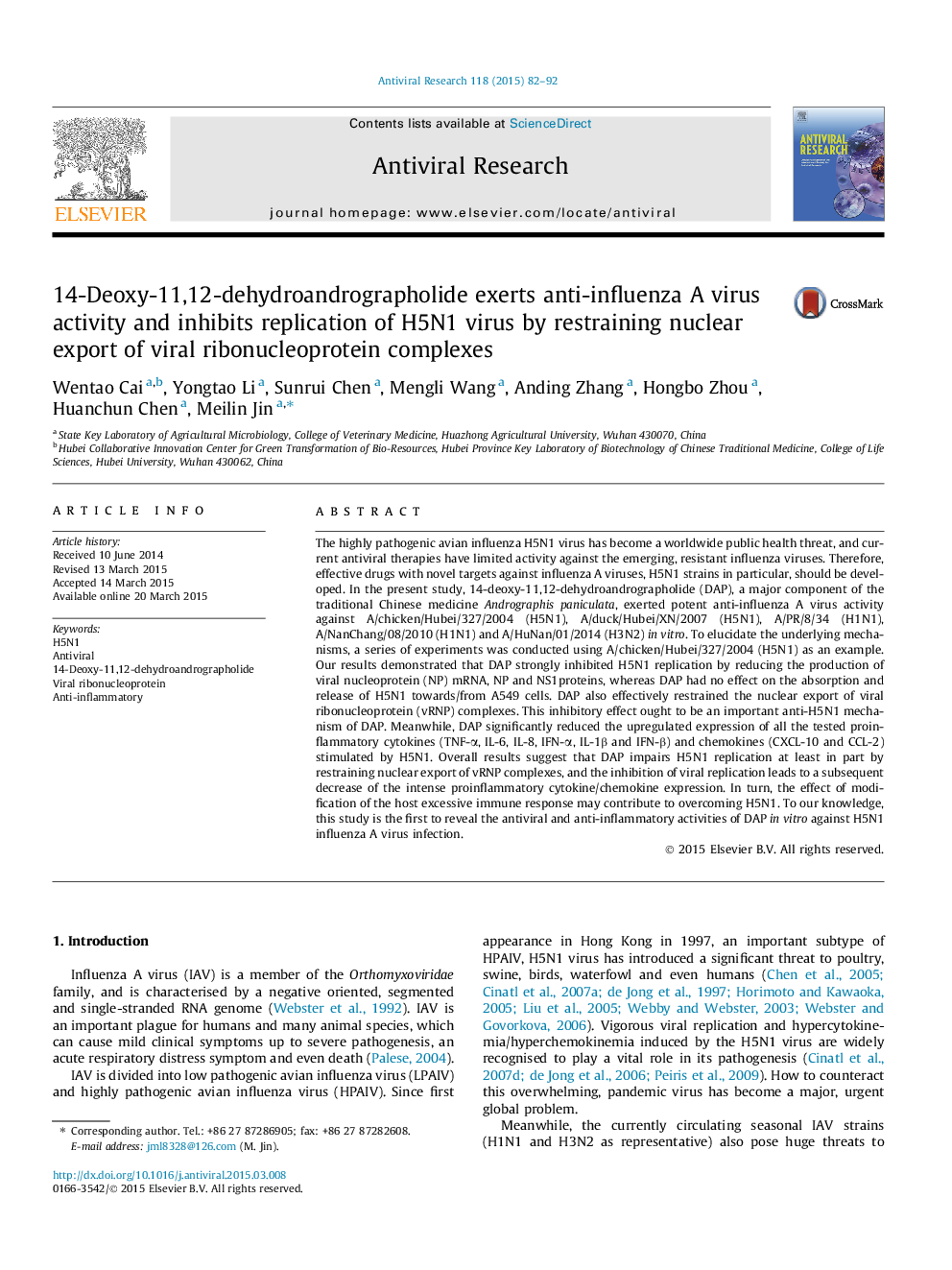| Article ID | Journal | Published Year | Pages | File Type |
|---|---|---|---|---|
| 2509826 | Antiviral Research | 2015 | 11 Pages |
•We observe that DAP exerts potent antiviral activity against influenza A virus (H5N1) in vitro.•DAP can effectively inhibit H5N1 replication and restrain nuclear export of viral ribonucleoprotein complexes.•DAP can strongly reduce the upregulated expression of proinflammatory cytokines/chemokines induced by H5N1.•We suggest that DAP should be a potential candidate drug and constituent of future anti-H5N1 influenza treatment strategies.
The highly pathogenic avian influenza H5N1 virus has become a worldwide public health threat, and current antiviral therapies have limited activity against the emerging, resistant influenza viruses. Therefore, effective drugs with novel targets against influenza A viruses, H5N1 strains in particular, should be developed. In the present study, 14-deoxy-11,12-dehydroandrographolide (DAP), a major component of the traditional Chinese medicine Andrographis paniculata, exerted potent anti-influenza A virus activity against A/chicken/Hubei/327/2004 (H5N1), A/duck/Hubei/XN/2007 (H5N1), A/PR/8/34 (H1N1), A/NanChang/08/2010 (H1N1) and A/HuNan/01/2014 (H3N2) in vitro. To elucidate the underlying mechanisms, a series of experiments was conducted using A/chicken/Hubei/327/2004 (H5N1) as an example. Our results demonstrated that DAP strongly inhibited H5N1 replication by reducing the production of viral nucleoprotein (NP) mRNA, NP and NS1proteins, whereas DAP had no effect on the absorption and release of H5N1 towards/from A549 cells. DAP also effectively restrained the nuclear export of viral ribonucleoprotein (vRNP) complexes. This inhibitory effect ought to be an important anti-H5N1 mechanism of DAP. Meanwhile, DAP significantly reduced the upregulated expression of all the tested proinflammatory cytokines (TNF-α, IL-6, IL-8, IFN-α, IL-1β and IFN-β) and chemokines (CXCL-10 and CCL-2) stimulated by H5N1. Overall results suggest that DAP impairs H5N1 replication at least in part by restraining nuclear export of vRNP complexes, and the inhibition of viral replication leads to a subsequent decrease of the intense proinflammatory cytokine/chemokine expression. In turn, the effect of modification of the host excessive immune response may contribute to overcoming H5N1. To our knowledge, this study is the first to reveal the antiviral and anti-inflammatory activities of DAP in vitro against H5N1 influenza A virus infection.
